 |
| Consolidated PB4Y-2 Privateer, 1945. |
The Consolidated PB4Y-2 Privateer is a World War II and
Korean War era patrol bomber of the United States Navy derived from the
Consolidated B-24 Liberator. The Navy had been using unmodified B-24s as the
PB4Y-1 Liberator, and the type was considered very successful. A fully
navalized design was desired, and Consolidated developed a dedicated long-range
patrol bomber in 1943, designated PB4Y-2 Privateer. In 1951, the series was
redesignated P4Y-2 Privateer. A further change occurred in October 1962 when
remaining Navy Privateers (all having previously been converted to drone
configuration as P4Y-2K) were redesignated QP-4B.
Design and Development
The Privateer was externally similar to the Liberator, but
the fuselage was longer to accommodate a flight engineer's station, and it had
a tall single vertical stabilizer rather than the B-24's twin tail
configuration. The Navy wanted a flight engineer crew member to reduce pilot
fatigue on long duration over water patrols. The single vertical tail was
adopted from the USAAF's canceled B-24N design (and was slightly taller on the
Privateer) because it would increase stability at low to medium altitudes for
maritime patrol. The Ford Motor Company, which produced B-24s for the United
States Army Air Forces, had earlier built an experimental variant (B-24K) using
a single tail. Aircraft handling was improved. The single tail design was used
on the B-32 Dominator and PB4Y-2 and was slated for the US Army Air Forces' proposed
B-24N production model to be built by Ford, but that order (for several thousand
bombers) was canceled on 31 May 1945.
Defensive armament on the PB4Y-2 was increased to twelve
.50-in (12.7 mm) M2 Browning machine guns in six power-operated turrets (two
dorsal, two waist, nose and tail); the B-24's ventral, retractable Sperry ball
turret was omitted. Turbosuperchargers were not fitted to the Privateer's
engines since maritime patrol missions were not usually flown at high altitude,
improving performance and also saving weight.
The navigator's astrodome was moved from its (B-24/PB4Y-1)
position on the aircraft's upper nose to behind the first dorsal gun turret.
Electronic countermeasure (ECM), communication and radar antennas also
protruded or were enclosed in fairings at various locations on the fuselage of
the Privateer, including a manually retractable AN/APS-2 radome behind the nose
wheel well.
The Navy eventually took delivery of 739 Privateers, the
majority after the end of the war. Several PB4Y-2 squadrons saw operational
service in the Pacific theater through August 1945 in the reconnaissance,
search and rescue, electronic countermeasures, communication relay, and
anti-shipping roles (the latter with the "Bat" radar-guided bomb).
Role: Maritime patrol bomber
Manufacturer: Consolidated
Aircraft
Introduction: 1943
Retired:
1954, U.S. Navy
1958, U.S. Coast Guard
Primary users:
United States Navy
United States Coast Guard
Produced: 1943–1945
Number built: 739
Developed from: Consolidated B-24
Liberator
Operational History
The Privateer entered U.S. Navy service during late 1944,
Patrol Bomber Squadrons 118 and 119 (VPB-118 and VPB-119) being the first Fleet
squadrons to equip with the aircraft. The first overseas deployment began on 6
January 1945, when VPB-118 left for operations in the Marianas. On 2 March 1945
VPB-119 began "offensive search" missions out of Clark Field, Luzon
in the Philippines, flying sectored searches of the seas and coastlines
extending from the Gulf of Tonkin in the south, along the Chinese coast, and
beyond Okinawa in the north.
Privateers were used as typhoon/hurricane hunters from 1945
to the mid-1950s. One aircraft, designated BuNo 59415 of VPB-119, went down
when it experienced mechanical trouble while investigating a Category 1 typhoon
near Batan Island in the Philippines. It attempted to land on the island, but
was unable to do so and crashed. It was one of only six hurricane hunter
flights that were ever lost, and the only one found. Another P4Y-2S, designated
BuNo 59716 of Squadron VW-3 (formerly VJ-1), was lost during reconnaissance of
Super Typhoon Doris on 16 December 1953. Flying out of NAS Agana, Guam, the
Privateer with a crew of nine was tracking Typhoon Doris with sustained winds
of 90-95 knots near the small island of Agrihan north of Guam. No sign of the
crew nor wreckage of the plane was ever found.
PB4Y-2s were also used during the Korean War to fly
"Firefly" night illumination missions dropping parachute flares to detect
North Korean and Chinese seaborne infiltrators. In addition, Privateers were
used by the U.S. Navy for signals intelligence (SIGINT) flights off of the
coast of the Soviet Union and the People's Republic of China. On 8 April 1950,
Soviet La-11 fighters shot down a U.S. Navy PB4Y-2 Privateer (BuNo 59645) over
the Baltic Sea, off the coast of Liepāja, Latvia. Named the Turbulent Turtle,
the aircraft was assigned to Patrol Squadron 26 (VP-26), Det A.
The French Aéronavale was supplied with Privateers via the
Mutual Defense Assistance Act, which they used as bombers during the Indochina
War and later operated out of Bizerte, Tunisia and Algiers.
All U.S. Navy PB4Y-2s were retired by 1954, though unarmed
PB4Y-2G Privateers served until 1958 with the Coast Guard before being
auctioned off for salvage.
The Navy dropped the patrol-bomber designation in 1951 and
its remaining PB4Y-2s were redesignated P4Y-2 Privateer. (The earlier XP4Y-1
Corregidor was a completely different design, based on the Consolidated Model
31 twin-engine flying boat.) PB4Y-2s were still being used as drones in the
1950s/early 1960s, designated PB4Y-2K, and P4Y-2K after 1951. They were then
redesignated QP-4B under the 1962 United States Tri-Service aircraft
designation system, becoming part of the new patrol number series between the
Lockheed P-3 Orion and the Martin P-5 Marlin.
A number of PB4Ys were supplied to the Republic of China Air
Force for use in missions over the People's Republic of China. One was shot
down by ground fire on 12 September 1954, near Xiamen, People's Republic of
China. The crew of nine was killed. Another was shot down on 15 February 1961
by Burmese Hawker Sea Fury fighter aircraft, near the Thai-Burmese border,
killing five members of the crew. Two other crew members were taken prisoner.
This aircraft was carrying supplies for Chinese Kuomintang forces fighting in
northern Burma.
Privateers in Aerial Firefighting
A limited number of refitted PB4Ys and P4Ys continued in
civilian service as air tankers, dropping fire retardant on forest fires
throughout the western United States. On 18 July 2002, one such refitted P4Y,
BuNo 66260 (seen in picture to right) operated by Hawkins and Powers Aviation
of Greybull, Wyoming broke up in flight while fighting a wildfire near Rocky
Mountain National Park. Both crew members were killed in the accident, and the
Federal Aviation Administration temporarily grounded all large air tankers in
the region. Despite the fact that the crash was the result of poor maintenance,
and a much newer C-130 based aircraft also broke apart due to similar stresses,
all remaining Privateers were retired.
Variants
YPB4Y-2: Prototypes,
three built.
PB4Y-2: Main
production version, 736 built.
Crew: 11: two pilots, navigator,
bombardier, five gunners, two radio operators
Length: 74 ft 7 in (22.73 m)
Wingspan: 110 ft 0 in (33.53 m)
Height: 30 ft 1 in (9.17 m)
Wing area: 1,048 ft² (97.4 m²)
Empty weight: 27,485 lb (12,467
kg)
Maximum takeoff weight: 65,000 lb
(29,500 kg)
Powerplant: 4 × Pratt &
Whitney R-1830-94 radial engines, 1,350 hp (1,007 kW) each
Maximum speed: 300 mph (261 kn,
482 km/h)
Cruise speed: 175 mph (121 kn, 224
km/h)
Range: 2,820 mi (2,450 nmi, 4,540
km)
Service ceiling: 21,000 ft (6,400
m)
Wing loading: 62 lb/ft² (300
kg/m²)
Guns: 12 × .50 in (12.7 mm) M2
Browning machine guns in six turrets
Bombs: Up to 12,800 lb (5,800 kg)
of bombs, mines, or torpedoes
PB4Y-2B: PB4Y-2s equipped to launch
ASM-N-2 Bat air-to-surface missiles. Re-designated P4Y-2B in 1951.
PB4Y-2M: PB4Y-2s
converted for weather reconnaissance. Re-designated P4Y-2M in 1951.
PB4Y-2S: PB4Y-2s
equipped with anti-submarine radar. Re-designated P4Y-2S in 1951.
PB4Y-2G: PB4Y-2s
converted for air-sea rescue and weather reconnaissance duties with the U.S.
Coast Guard. Re-designated P4Y-2G in 1951.
PB4Y-2K: PB4Y-2s
converted to target drones. Re-designated P4Y-2K in 1951 and QP-4B in 1962.
Operators
Canada
Republic of China
France
Honduras
United States:
United States Navy
United States Coast Guard
Survivors
Airworthy
PB4Y-2
66302 – based in Casa Grande,
Arizona.
On Display
59701 – Museum of Flight and
Aerial Firefighting in Greybull, Wyoming.
59819 – Pima Air and Space Museum
in Tucson, Arizona.
59876 – Yankee Air Museum in
Belleville, Michigan.
59882 – Museum of Flight and
Aerial Firefighting in Greybull, Wyoming.
59932 (nose only) Over Exposed –
The National World War II Museum in New Orleans, Louisiana. Displayed as a
B-24D.
66261 – National Naval Aviation
Museum at Naval Air Station Pensacola, Florida.
66300 – Yanks Air Museum in Chino,
California.
Bibliography
Bridgeman, Leonard. "The Consolidated Vultee
Privateer." Jane's Fighting Aircraft of World War II. London: Studio,
1946.
Gordon
Swanborough, Peter M. Bowers: United States Navy aircraft since 1911. Naval
Institute Press, Annapolis, Maryland, 1990, p. 106.
 |
| In flight view of U.S. Navy Consolidated PB4Y-2 Privateer, unit unknown, but a good flying shot. |
 |
| Consolidated PB4Y-2 Privateer landing. |
 |
| Photographed while flying over the southern tip of Malaya while on a photo reconnaissance mission to Singapore in June 1945 is PB4Y-2 Privateer (BuAer 59393), number X393, VPB-106, piloted by Lt. Commander Pappy Mears, accompanied by a PB4Y-1 piloted by Lt. Heyler of VPB-111. The Japanese airstrip at Tebrau is seen in the foreground, while Singapore Island can be seen partially covered with low clouds in the background. Despite heavy anti-aircraft fire and an attack by nearly a dozen Oscar fighters, the Privateer and Liberator continued with the assigned mission while gunners from both planes held off the enemy fighters while the necessary photographs were being taken. This photo was taken just seconds before Mears' aircraft was attacked by an Oscar fighter which scored a hit in the No. 3 engine, causing the engine to burst into flames. |
 |
| The PB4Y-2 closes in for protection from enemy fighters. Both planes have lost altitude from 10,000 feet to 8,000 feet. Heyler put down flaps to slow his Liberator enough to fly wing on Mears. The fire in the engine went out, only to reappear again. |
 |
| Another view of the Consolidated PB4Y-2 Privateer with its Number 3 engine on fire, as seen from the port waist gun position of a PB4Y-1, over Singapore in June 1945. |
 |
| Another view of the PB4Y-2 with the worsening engine fire. |
 |
| Flames flare from the wing as the Privateer passes just over a medium-sized ship at anchor. This photo was taken when the Privateer was at about 500 feet. The fir was out of control on the Privateer. The center section was weakened and the wing was bent up and back. Seconds later, when it was at 300 feet, the wing broke off between the starboard engines, the plane turned on its back and crashed. A submarine was sent to look for survivors, but found none. After the war it was learned that there were two survivors. Mears was among those killed in the crash. |
 |
| View from rear of Consolidated PB4Y-2 Privateer looking forward. Crewman standing in cockpit hatch. |
 |
| Consolidated PB4Y-2 Privateers on an airfield. |
 |
| Crew member in the cockpit of a Consolidated PB4Y-2 Privateer. |
 |
| Consolidated PB4Y-2 Privateer, number Z830, VP-115. |
 |
| View of flak damage in wing of Consolidated PB4Y-2 Privateer. |
 |
| Ground crew working on Consolidated PB4Y-2 Privateer. |
 |
| Crew of Consolidated PB4Y-2 Privateer. |
 |
| Consolidated PB4Y taxis along airstrip. P-51 Mustangs and a B-29 Superfortress are visible in the background. |
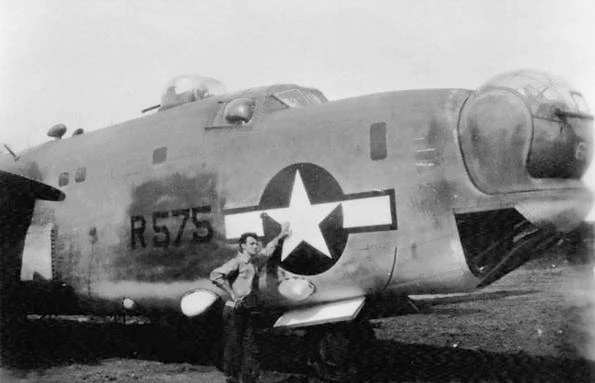 |
| Consolidated PB4Y-2 Privateer, number R575. |
 |
| Consolidated PB4Y-2 Privateer, number R575. |
 |
| Consolidated PB4Y-2 Privateer, number R575. |
 |
| Consolidated PB4Y-2 Privateer. |
 |
| Crewmen of a Consolidated PB4Y-2 Privateer sit on the waist gun turret, nicknamed “DDs Dug Out.” |
 |
| Gunner of Consolidated PB4Y-2 Privateer next to the waist gun turret. |
 |
| Gunner of Consolidated PB4Y-2 Privateer next to the waist gun turret. |
 |
| Gunner of Consolidated PB4Y-2 Privateer next to the waist gun turret. |
 |
| Crew member alongside waist gun turret of Consolidated PB4Y-2 Privateer. |
 |
| Crew member alongside Consolidated PB4Y-2 Privateer, number X395. |
 |
| Crew member in front of nose turret of Consolidated PB4Y-2 Privateer. |
 |
| Crewman in front of nose of Consolidated PB4Y-2 Privateer. |
 |
| Crew member of Consolidated PB4Y-2 Privateer in front of tail. |
 |
| Consolidated PB4Y-2 Privateer landing. |
 |
| Consolidated PB4Y-2 Privateer, number Z490. |
 |
| Consolidated PB4Y-2 Privateers in formation. |
 |
| View of tail of Consolidated PB4Y-2 Privateer. |
 |
| Consolidated PB4Y-2 Privateer, number R582, “Miss Sea-ducer,” VP-116. |
 |
| Consolidated PB4Y-2 Privateer, number Z490. |
 |
| Consolidated PB4Y-2 Privateer, number V522. |
 |
| Crew member of a Consolidated PB4Y-2 Privateer in front of nose with ERCO turret. |
 |
| Consolidated PB4Y-2 Privateer, number XB587, VP-109, in flight over Naval Air Station Jacksonville, Florida, 1943. |
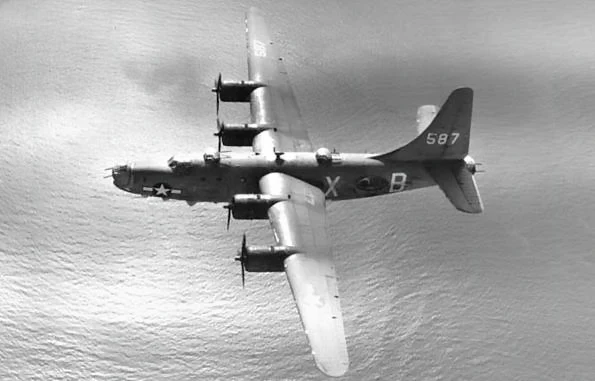 |
| Consolidated PB4Y-2 Privateer, number XB587, VP-109, in flight over Naval Air Station Jacksonville, Florida, 1943. |
 |
| Consolidated PB4Y-2 Privateer, number XB587, over Florida. |
 |
| Consolidated PB4Y-2 Privateer, number XB587, over Florida. |
 |
| Consolidated PB4Y-2 Privateer, number XB587, over Florida. |
 |
| Consolidated PB4Y-2 Privateer, BuNo 53731, number HB120, Florida. |
 |
| Consolidated PB4Y-2 Privateer, “The Kamikaze Miss.” |
 |
| Consolidated PB4Y-2 Privateer, BuNo 59520, number X520, VPB-123, “Nobody Else’s Butt.” |
 |
| Consolidated PB4Y-2 Privateer, “Angel in Di-Skies.” |
 |
| Consolidated PB4Y-2 Privateer, “Angel in Di-Skies.” |
 |
| Consolidated PB4Y-2 Privateer, BuNo 59533, number D67, of heavy patrol squadron (landplane) VP-HL-3 in 1946/47. The squadron was established as bombing squadron VB-138 on 15 March 1943. It was redesignated VPB-138 (1 October 1944), VPB-124 (15 December 1945), VP-124 (15 March 1946), and VP-HL-3 (15 November 1946). It was disestablished on 22 May 1947. |
 |
| Consolidated PB4Y-2 Privateer, BuNo 59533, number D67. |
 |
| Consolidated PB4Y-2 Privateer, number D67, VP-109. |
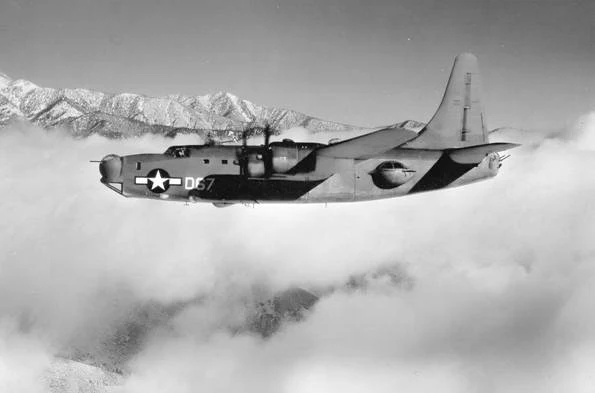 |
| Consolidated PB4Y-2 Privateer, number D67. |
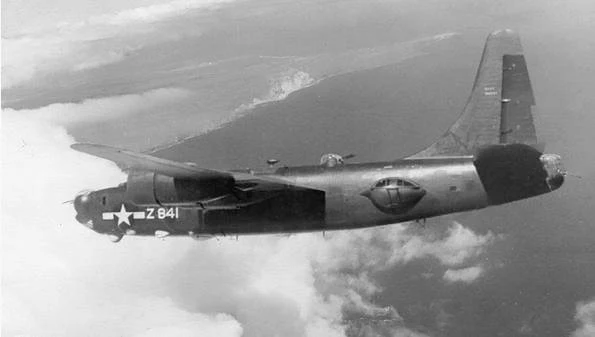 |
| Consolidated PB4Y-2 Privateer, number Z841, VP-115. |
 |
| Consolidated PB4Y-2 Privateers, number Z815 and number Z841, VP-115. |
 |
| Consolidated PB4Y-2 Privateer, BuNo 59640, number 640. |
 |
| Consolidated PB4Y-2 Privateer, BuNo 59640, number 640, with rocket-assisted take-off bottles below and just behind cockpit and below and just in front of waist turret. |
 |
| Consolidated PB4Y-2 Privateer in three-tone scheme. |
 |
| Consolidated PB4Y-2 Privateer, number Z68, in three-tone scheme. |
 |
| Consolidated PB4Y-2 Privateer, number Z68. |
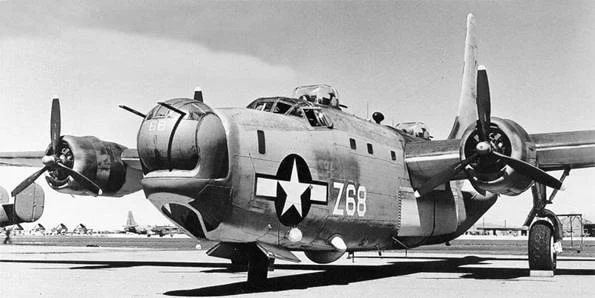 |
| Consolidated PB4Y-2 Privateer, number Z68. |
 |
| Consolidated PB4Y-2 Privateer. |
 |
| Consolidated PB4Y-2 Privateer, number R59. |
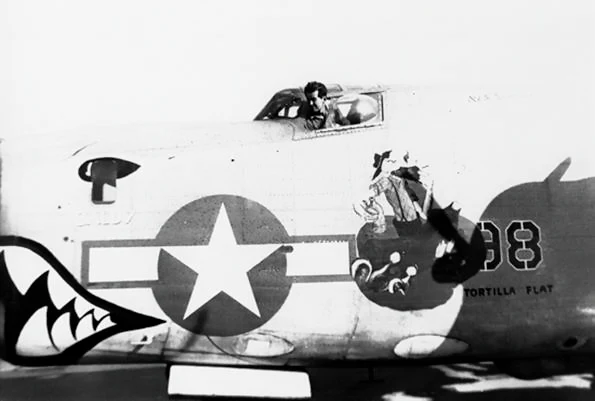 |
| Consolidated PB4Y-2 Privateer, “Tortilla Flat.” |
 |
| Consolidated PB4Y-2 Privateer. |
 |
| Consolidated PB4Y-2 Privateer. |
 |
| Consolidated PB4Y-2 Privateers, including number S54. |
 |
| Tail of Consolidated PB4Y-2 Privateer, BuNo 59535. |
 |
| Consolidated PB4Y-2 Privateer in three-tone scheme. |
 |
| Tail of Consolidated PB4Y-2 Privateer. |
 |
| Consolidated PB4Y-2 Privateer. |
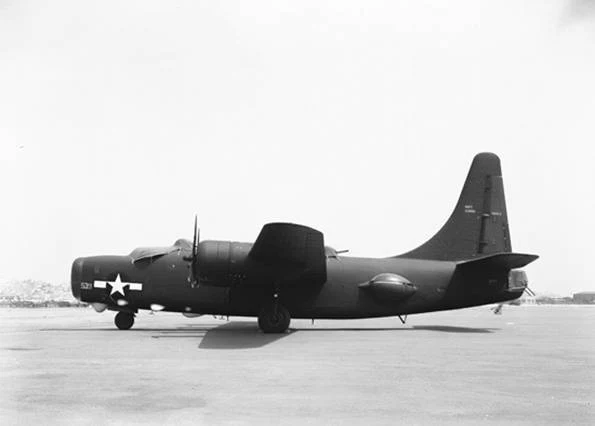 |
| Consolidated PB4Y-2 Privateer with glass nose instead of nose turret. Tarp covering cockpit greenhouse to protect from hot sun. 5 April 1945. |
 |
| Consolidated PB4Y-2 Privateer, number 740, with glass nose instead of nose turret. Tarp covering cockpit greenhouse to protect from hot sun. |
 |
| Front view of Consolidated PB4Y-2 Privateer. |
 |
| Rear view of Consolidated PB4Y-2 Privateer. |
 |
| Front view of Consolidated PB4Y-2 Privateer. |
 |
| Front view of Consolidated PB4Y-2 Privateer. |
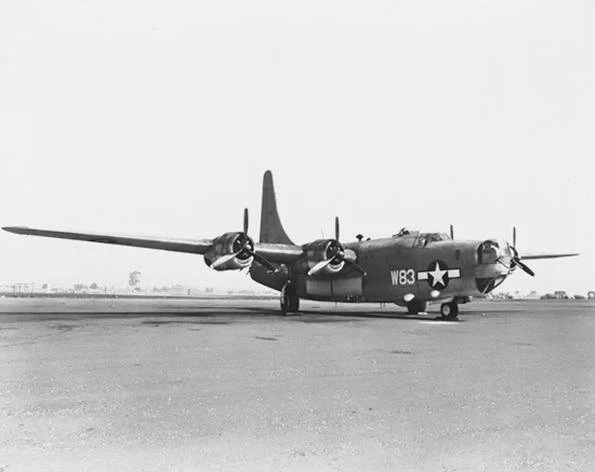 |
| Consolidated PB4Y-2 Privateer, number W83, in three-tone scheme. |
 |
| Consolidated PB4Y-2 Privateer, number W83, in three-tone scheme. |
 |
| Front view of Consolidated PB4Y-2 Privateer, number W83, in three-tone scheme. |
 |
| Attaching vertical stabilizer to Consolidated PB4Y-2 Privateer. |
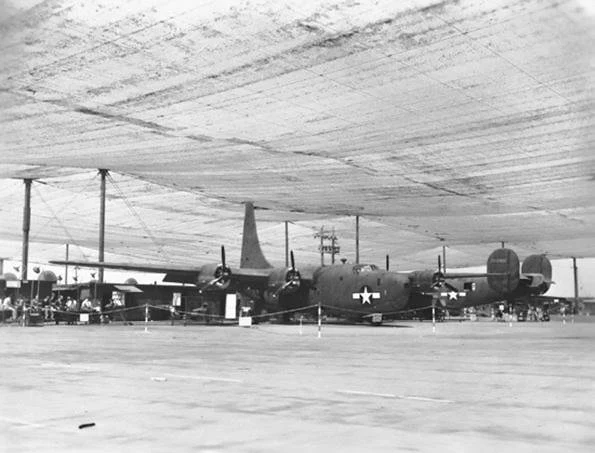 |
| Consolidated PB4Y-2 Privateer under camouflage netting outside the factory. |
 |
| Consolidated PB4Y-2 Privateers undergoing engine installation during final stages of production. |
 |
| View of Consolidated PB4Y-2 Privateer starboard landing gear and waist turret. |
 |
| U.S. Navy personnel working on aircraft engines (probably Pratt & Whitney R-1830) on Okinawa. Note the Consolidated PB4Y-2 Privateer in the background. June 1945. |
 |
| Maintenance on tail turret of Consolidated PB4Y-2 Privateer. |
 |
| Close up of nose of Consolidated PB4Y-2 Privateer, number X397, “Lucky-Leven.” |
 |
| Another view of Consolidated PB4Y-2 Privateer starboard landing gear and waist turret. |
 |
| Nose art of a Consolidated PB4Y-2 Privateer. |
 |
| Close up of kill and mission markings of a Consolidated PB4Y-2 Privateer. Pilot nickname “Terrible Thomas” beneath cockpit. |
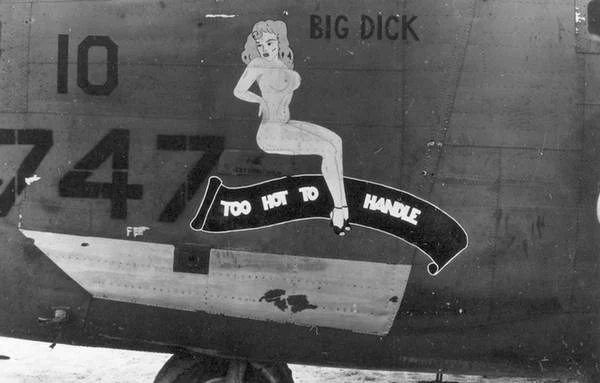 |
| Nose art on Consolidated PB4Y-2 Privateer, 747, “Too Hot to Handle.” The scroll and lettering on the nose art was digitally retouched more recently by an unknown party. |
 |
| Unnamed Consolidated PB4Y-2 Privateer, number 382X, VPB-106. |
 |
| A Navy PB4Y-2, BuNo59810, number 810, which carried the Polly Project public address equipment to hail the Japanese from an altitude of 10,000 feet. |
 |
| A Consolidated PB4Y-2 Privateer taking off with two ASM-N-2 Bat glide bombs attached to its wings. |
 |
| A Bat self-homing bomb on its hoist below the wing of a Consolidated PB4Y-2 Privateer. Note the hand cranks on the wing used to hoist the bomb into place. |
 |
| ASM-N-2 Bat guided bomb on a Consolidated PB4Y-2 Privateer, probably at the Philadelphia Ordnance District, 1944-46. |
 |
| The men who developed the Navy’s robot “Bat” under the wing of a PB4Y-2 Privateer plane. Left to right: Dr. H.K. Skramstad, Bureau of Standards; Russell C. Newhouse, Bell Telephone Labs; Lieutenant Commander Otto McCrackin, USNR, Bureau of Aeronautics; Captain D.P. Tucker, USN, Bureau of Ordnance; Commander L.P. Tabor, USNR, Bureau of Ordnance; Dr. Hugh L. Dryden, Bureau of Standards; Hunter Boyd, Bureau of Standards; and Ralph Lamm, Massachusetts Institute of Technology. Photograph released December 12, 1945. |
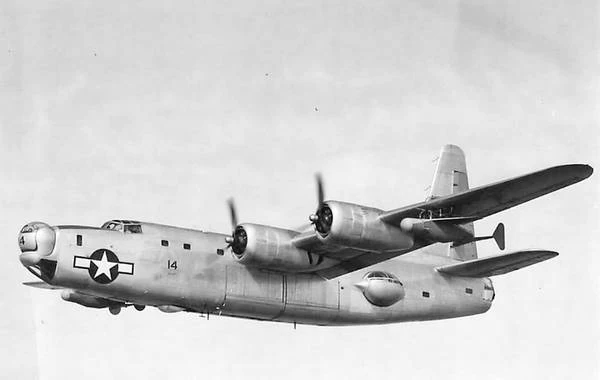 |
| Consolidated PB4Y-2 Privateer carrying radar-guided glide bomb ASM-N-2 Bat in 1946. |
 |
| Consolidated PB4Y-2 Privateer. |
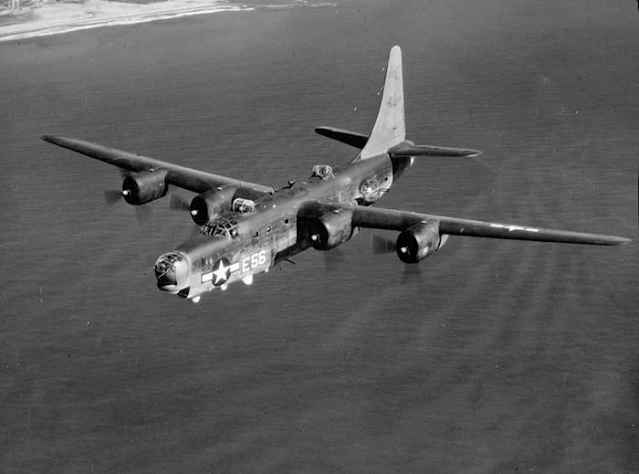 |
| Consolidated PB4Y-2 Privateer, BuNo 59602, number E56, 1945. |
 |
| Consolidated PB4Y-2 Privateer, BuNo 59602, number E56, 1945. |
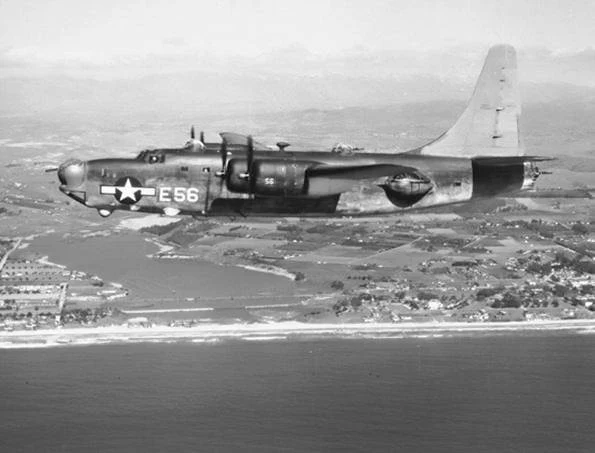 |
| Consolidated PB4Y-2 Privateer, BuNo 59602, number E56, 1945. |
 |
| Consolidated PB4Y-2 Privateer, BuNo 59602, number E56, 1945. |
 |
| Consolidated PB4Y-2 Privateer, BuNo 59602, number E56, 1945. |
 |
| Consolidated PB4Y-2 Privateer, BuNo 59602, number E56, 1945. |
 |
| Consolidated PB4Y-2 Privateer, BuNo 59602, number E56, 1945. |
 |
| A U.S. Navy Consolidated PB4Y-2 Privateer (BuNo 59351) at Naval Air Station Patuxent River, Maryland, 11 July 1944. |
 |
| Consolidated PB4Y-2 Privateer in three-tone scheme at factory. |
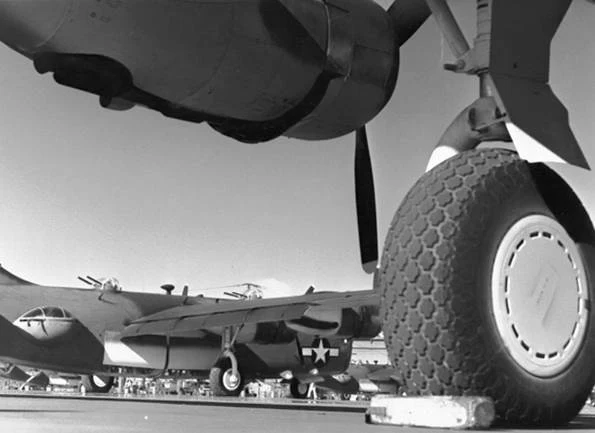 |
| Consolidated PB4Y-2 Privateer in three-tone scheme at factory. |
 |
| Consolidated PB4Y-2 Privateer. |
 |
| Consolidated PB4Y-2 Privateer. |
 |
| Consolidated PB4Y-2 Privateer. |
 |
| Consolidated PB4Y-2 Privateer. |
 |
| Consolidated PB4Y-2 Privateer. |
 |
| Consolidated PB4Y-2 Privateer. |
 |
| Consolidated PB4Y-2 Privateer in three-tone scheme. Note that blue mottling has been applied to some of the vertical surfaces of the lower white underside color to tone down the white. |
 |
| Consolidated PB4Y-2 Privateer in three-tone scheme at factory. |
 |
| Consolidated PB4Y-2 Privateers under construction at factory. |
 |
| Wind tunnel model of Consolidated PB4Y-2 Privateer with Liberator tail. |
 |
| Wind tunnel model of Consolidated PB4Y-2 Privateer with Liberator tail. |
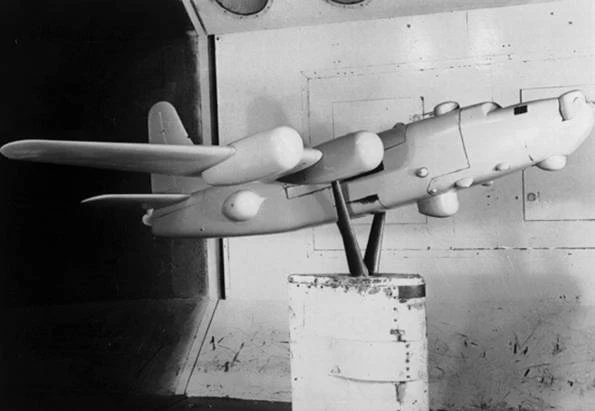 |
| Wind tunnel model of Consolidated PB4Y-2 Privateer with Liberator tail. |
 |
| Consolidated PB4Y-2 Privateer. |
 |
| Consolidated-Vultee PB4Y-2 showing ATB and ATC antenna installations. 20 July 1944. |
 |
| Consolidated PB4Y-2 Privateer, BuNo 59604, number 604. |
 |
| Consolidated PB4Y-2 Privateer, BuNo 59378, number 378, VPB-118. |
 |
| Consolidated PB4Y-2 Privateer, BuNo 59807, number 807, Aleutian Islands, 1944. |
 |
| Consolidated PB4Y-2 Privateer, 69V, number 780, Anchorage, Alaska, 1945. |
 |
| Sgt. J.S. Wilson painting nose art on a Consolidated PB4Y-2 Privateer based at Eniwetok, June 1944. |
 |
| Consolidated PB4Y-2 Privateer, number E141, VP-109. |
 |
| Consolidated PB4Y-2 Privateer, number 760, “Covergirl,” VP-116. |
 |
| Consolidated PB4Y-2 Privateer, number E145, and crew. |
 |
| Close up of nose and Erco 250SH ball turret of Consolidated PB4Y-2 Privateer. |
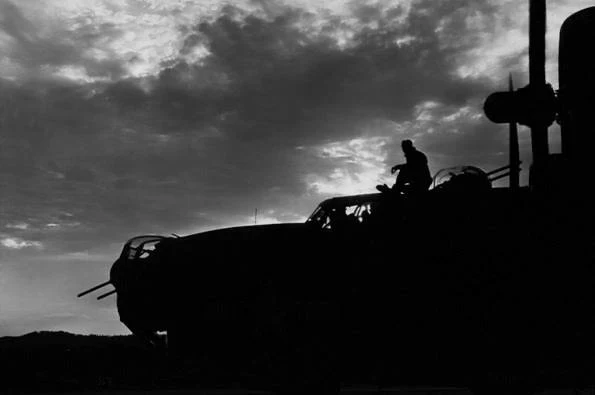 |
| Consolidated PB4Y-2 Privateer, VPB-118, Okinawa, 1945. |
 |
| Consolidated PB4Y-2 Privateer. |
 |
| Consolidated PB4Y-2 Privateer, number X606. |
 |
| Crew of Consolidated PB4Y-2 Privateer, number X505, “Redwing,” VPB-123. |
 |
| Crewmen of Consolidated PB4Y-2 Privateer, BuNo 59487, VPB-123. |
 |
| Crewmen of Consolidated PB4Y-2 Privateer, BuNo 59487, VPB-123. |
 |
| Pulling the props through before starting the engines on Consolidated PB4Y-2 Privateer, VPB-118, 1945. |
 |
| Consolidated PB4Y-2 Privateer, number Z57, VPB-123. |
 |
| PB4Y-2 Privateers. Note the white areas beneath the wings and horizontal stabilizes to lessen shadows. |
 |
| Consolidated PB4Y-2 Privateer, number W415. |
 |
| Nice upper plan view shot of a Consolidated PB4Y-2 Privateer, although in French Navy service in the 1950s. |
 |
| Front view of Consolidated PB4Y-2 Privateer. |
 |
| Rear view of Consolidated PB4Y-2 Privateer partially inside Hangar #4, Ault Field, Whidby Island, Washington. |
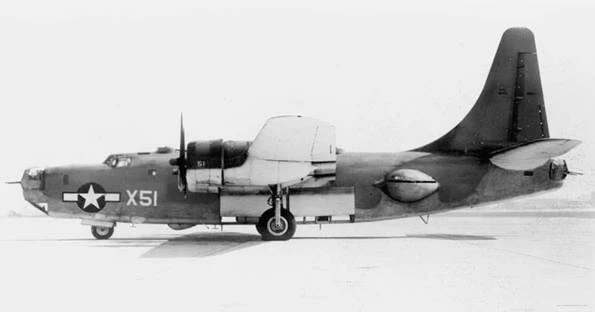 |
| Consolidated PB4Y-2 Privateer, number X51, in three-tone scheme. |
 |
| Consolidated PB4Y-2 Privateer. Note the Consolidated nose turret instead of the ERCO turret. 1943. |
 |
| Consolidated XPB4Y-2 Privateer prototype. Note the Consolidated nose turret. |
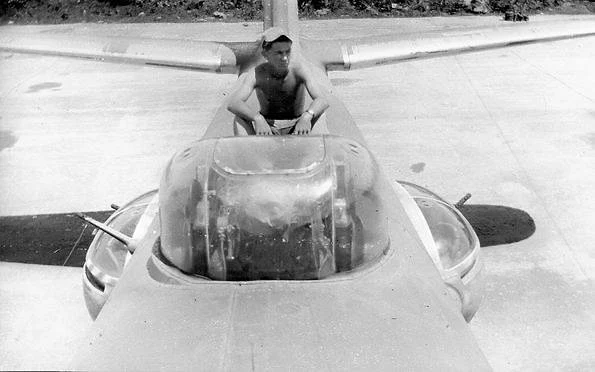 |
| Consolidated PB4Y-2 Privateer, VPB-106 or VPB-107, Samar, Philippines, 1946. |
 |
| Consolidated PB4Y-2 Privateers, VPB-106 or VPB-107, Samar, Philippines, 1946. |
 |
| Consolidated PB4Y-2 Privateer, number X620, VPB-106 or VPB-107, Samar, Philippines, 1946. |
 |
| Consolidated PB4Y-2 Privateer, number S759. Douglas C-54 in background. |
 |
| Consolidated PB4Y-2 Privateer, number X51, in three-tone scheme. |
 |
| Consolidated PB4Y-2 Privateer, number X51, in three-tone scheme. |
 |
| Construction of wing surfaces of Consolidated PB4Y-2 Privateer, 10 November 1944. |
 |
| Construction of wing for Consolidated PB4Y-2 Privateer, 10 November 1944. |
 |
| Tire failure resulting from brake locking on left hand landing gear of Consolidated PB4Y-2 Privateer, BuNo 59353, 4 November 1944. |
 |
| Tire failure resulting from brake locking on left hand landing gear of Consolidated PB4Y-2 Privateer, BuNo 59353, 4 November 1944. |
 |
| Consolidated PB4Y-2 Privateer cockpit, BuNo 66304, 27 August 1945. |
 |
| Pilot and co-pilot cockpit overhead details. |
 |
| Proof positive that VHF was king in 1944. |
 |
| View of the ECM operator on a U.S. Navy Consolidated PB4Y-2 Privateer. |
 |
| Navy’s countermeasures against enemy radar. Bulging out below the fuselage of a PB4Y-2 Privateer these radomes house antenna for radar countermeasures except for the radome furthest right which contains antenna. Photograph released November 28, 1945. |
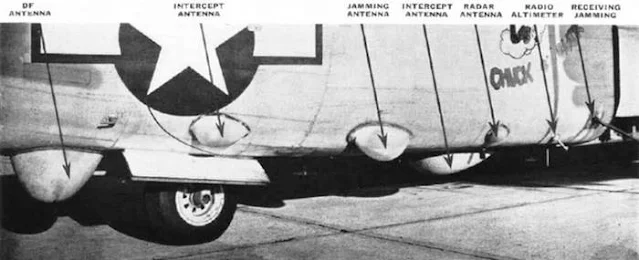 |
| View of the ECM antennae of a U.S. Navy Consolidated PB4Y-2 Privateer. This image was created for the manual by using the previous photo. |
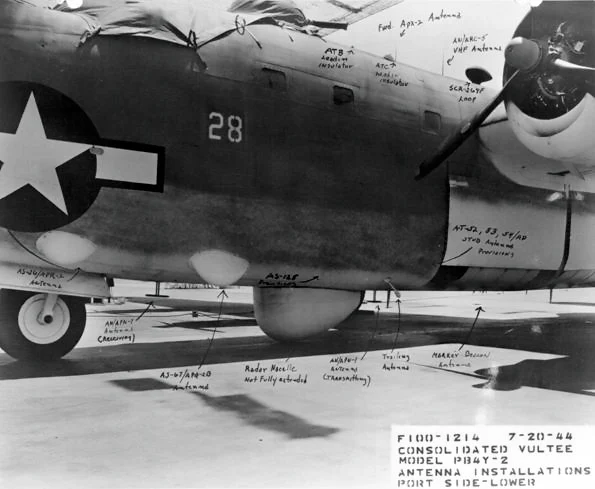 |
| View of the ECM antennae of a U.S. Navy Consolidated PB4Y-2 Privateer. This image was created using the previous photo. |
 |
| Consolidated-Vultee PB4Y-2 showing ATB and ATC antenna installations port side lower. 20 July 1944. |
 |
| Consolidated-Vultee PB4Y-2 showing ATB and ATC antenna installations starboard side lower. 20 July 1944. |
 |
| Consolidated-Vultee PB4Y-2 showing ATB and ATC antenna installations starboard side upper. 20 July 1944. |
 |
| Above the co-pilot’s position with the APS-2 slave indicator in the stowed position. |
 |
| Radio operator’s position. Actually, this was a ferret aircraft, so the radio operator more likely doubled as the HF intercept officer as well. |
 |
| Rear of the HF operator’s bay, which faces the ECM collection area. Antenna patch connectors and other cabling have yet to be installed at this point in time. |
 |
| AN/ARR-2 VHF homing receiver mounted above the APS-2 operator’s position. |
 |
| Somewhat later view of the APS-2 installation. Note the use of an empty display shell to get cable lengths correct during installation. |
 |
| SCR-269 radio compass—a Signal Corps piece of equipment in a Navy aircraft. The Navy seems to have adopted the USAAF “quick and dirty” open wiring approach to connector backshells, abandoning their traditional exquisite vinyl or braided copper covered flex tubing (at least for this one piece of equipment.) |
 |
| Large formation of Consolidated PB4Y-2 Privateers. |
 |
| Cover of PB4Y Electronic Equipment NTSch Line Maintenance manual. |
 |
| Production flow of Consolidated PB4Y-2 Privateer segments. |
 |
| Official drawing showing location of fire extinguishers in Consolidated PB4Y-2 Privateer. |
 |
| Consolidated PB4Y-2 Privateer general arrangement drawing. |
 |
| Official three-view paint and markings scheme for Consolidated PB4Y-2 Privateer. |
 |
| Consolidated PB4Y-2 Privateer. |
 |
| Consolidated PB4Y-2 Privateer interior. |
 |
| Location of defensive armor. |
 |
| Interior arrangement of the PB4Y-2. |
 |
| Defensive armor—Angles of armor protection. |
 |
| PB4Y-2 gunners arcs of fire. Consolidated PB4Y-2 Privateer with glass nose instead of turret, restored and on display at the Yankee Air Force Museum in Ypsilanti, Michigan. |
 |
| Consolidated PB4Y-2 Privateer with glass nose instead of turret, restored and on display at the Yankee Air Force Museum in Ypsilanti, Michigan. |
 |
| Consolidated PB4Y-2 Privateer, BuNo 66261 but marked as BuNo 66304, with ERCO nose turret restored and on display at the National Museum of Naval Aviation at NAS Pensacola, Florida. |


























































































































































































No comments:
Post a Comment